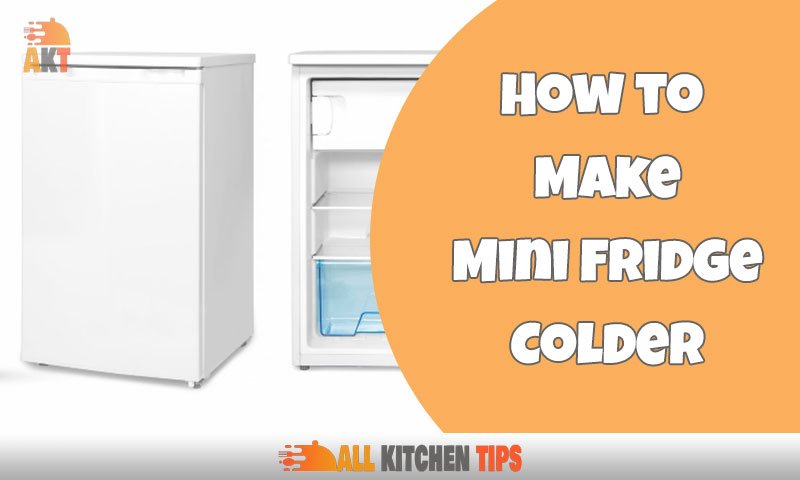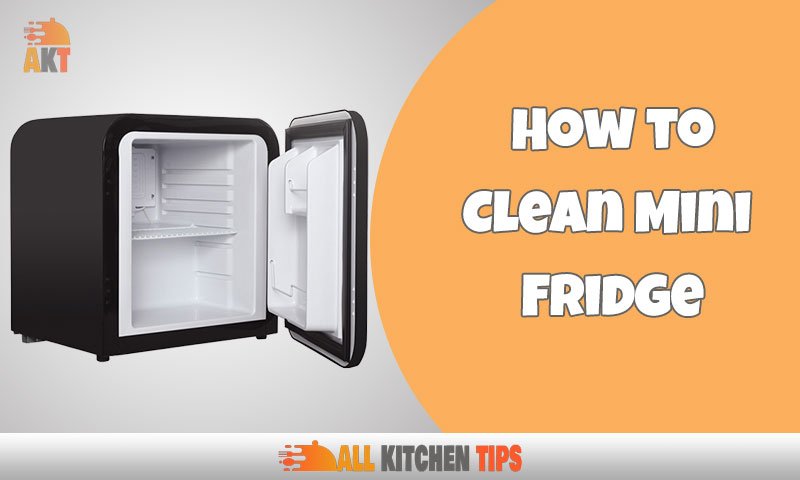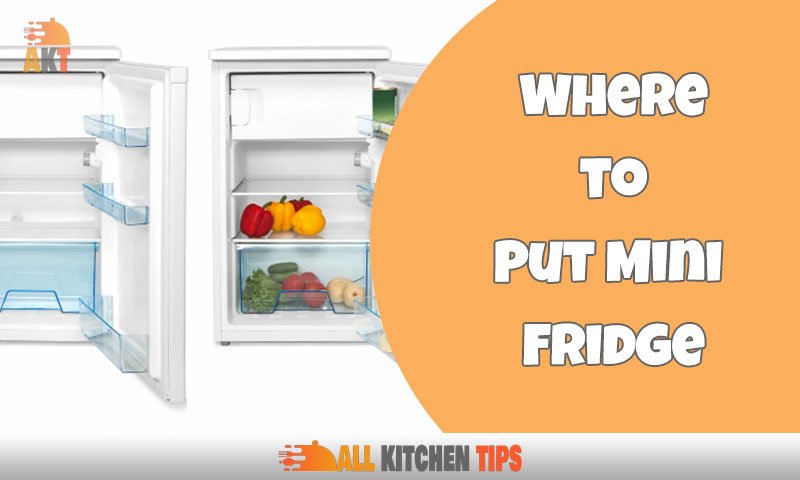You know the feeling—you open up your mini fridge, and it’s not quite as cool as you’d hoped. Suddenly, you realize it’s going to be yet another warm drink or soft cheese sandwich for lunch. What can you do?
Fortunately, there are a few simple steps you can take to make even the most stubborn mini fridge colder. But before trying anything else, it’s important to understand why your mini fridge isn’t keeping things nice and cool. In this article, we’ll explain how a mini fridge works and then share a few tips for making yours cooler.
We’ll also cover what to do if these DIY tactics don’t work, so you can get back to enjoying all of your favorite chilled snacks and drinks again in no time.
Understand the Basics of Your Mini Fridge
Wondering how you can make a mini fridge cooler? The first step is understanding the basics of mini fridges.
Most mini fridges come equipped with a refrigeration area and a smaller freezer section that can be used to store select items. Portable refrigerators come in three different types: thermoelectric, absorption, and compressor. Each one operates differently and affects the cooling process, but all of them offer convenience and portability.
This means that mini fridges are not just useful for storing leftovers or convenience snacks like candy bars. They can also be used to store everything from hidden booze to cheese, pizza leftovers to vegetables, chocolate, water, and fruit. Whatever your needs may be, there’s always a use for a mini fridge.
Placement and Location Tips for Maximum Cool
Finding the optimum location for your mini fridge is key to getting the most out of it. Placing the mini fridge near a food prep counter is ideal, as this will keep you close to all your ingredients during meal preps and make it easier to restock your ingredients. You could also consider the kitchen triangle when deciding where to place your mini fridge, as it should fit nicely into that triangle between your sink, stove, and refrigerator.
Additionally, make sure you keep the mini fridge upright when storing it for maximum cooling capabilities. That means you should avoid placing it in any sort of tilted position, as this can restrict airflow and cause cooling issues. Also, avoid any direct sunlight to further reduce temperature changes in the mini fridge. By following these simple tips, you can ensure that your mini fridge stays cold and ready for use.
Properly Maintaining and Cleaning a Mini Fridge
Just like any other appliance, properly maintaining and cleaning your mini fridge can help it operate more efficiently, and cool better. The best way to do this is to keep the surfaces clean, both inside and out.
Cleaning the Outside
On the outside of your mini fridge, use a pH neutral cleaner to remove any stains or grease. You should never use harsh or abrasive cleaners on the outside surfaces, as they can scratch and harm the finish of your appliance.
Sanitizing the Inside
Inside the fridge, you’ll want to use a solution of distilled vinegar and water with a damp cloth to wipe down all surfaces. This will help eliminate any germs without leaving behind any chemical residues that could affect your food’s taste or quality.
Remember to air out the interior for a few minutes after cleaning it, then replace shelves and drawers before filling it back up.
Keep It Stocked and Organized
When it comes to being able to keep your mini fridge colder, it’s all about organization. To keep everything at the optimum temperature, you’ll want to take advantage of all the available space in your mini fridge and employ some clever stacking and storing tricks.
The key is to use organizational bins or boxes, which will help you store items correctly and utilize all available space. Not only does this make the best use of your storage space, but it also keeps items from obstructing the air vents.
Organize like items together and, if necessary, stack items wisely: For example, if you have a lot of drinks, keep them stacked neatly in a row so that air can circulate more easily around them. This will help ensure that cool air is evenly distributed throughout the fridge. Lastly, don’t cram too many things into one section; this blocks airflow from circulating properly, which can cause different pockets of warm spots in your fridge.
These simple tips will help you optimize your mini fridge’s cooling power.
Adjust the Settings for Optimal Cooling
Adjusting the temperature setting on your mini fridge is essential to ensuring optimal cooling. Most mini fridges come with a temperature dial with settings from 1-5 or 1-7, and it’s important to figure out which one works best for you.
To make sure your mini fridge is cooling properly, it’s best to set it between 32°F and 40°F. That range will keep food chilled and still allow drinks to have an ideal drinking consistency. To make your fridge colder, turn the knob clockwise. If the temperature drops too low, turn the knob counter clock wise to warm it up again. Keep in mind that you should give your mini fridge at least 24 hours to reach the optimal temperature setting after making an adjustment.
Extra Tips to Get a Mini Fridge Colder
Sometimes, even after taking all the standard steps to get a mini fridge colder, you may still find that it’s not cold enough. Don’t worry. There are still some extra things you can do to keep your mini fridge super cool.
Increase air circulation
You can help keep air circulating inside your mini fridge by not overfilling it with food and drinks—leave enough room for air to move around. You should also position it away from any other heat-producing appliances like ovens, stoves, and microwaves, as well as direct sunlight.
Add insulation
You can add an extra layer of insulation to your mini fridge by using a blanket or other insulation material to wrap it up in. This will help keep the cold from leaking out, which means your mini fridge will stay colder for longer.
By following all these tips, your mini fridge is sure to stay at optimal cooling temperatures.
People Also Like: Knowing What Garbage Disposal Do You Need for Your kitchen
Conclusion
So, in summary, there are several ways to make your mini fridge colder. Depending on your budget and time frame, you may want to go with a simple and inexpensive solution like moving it to a cooler area, or you can choose something more involved like cleaning out the coils or adding additional insulation. There are also a few more advanced methods, like using a fan to circulate the air, or installing a secondary cooling unit. And, if you still find that your mini fridge isn’t cool enough, consider upgrading to a larger unit.
No matter what you choose, keeping in mind the tips and tricks we’ve discussed will help you get your mini fridge to the temperature you need. With a little effort, you’ll soon be enjoying cold drinks and snacks all summer long.





